RiMS Racing is distinctly different from what racing games are usually like, and that’s by design as it’s deliberately gone down a different path in terms of what it wants to achieve and how it’s going about it.
It’s rare in recent times to see a completely new series start in the racing game genre, and this is a double whammy because it’s also the first game to be developed by the newly established RaceWard Studio.
It’s a team of 40 people based in Milan, many of which used to work for Milestone developing its bike racing games such as the Ride series and the licensed MotoGP games.
The difference is that while Ride is a much more conventional racing game and could be summarised as a bike equivalent of the Forza Motorsport or Gran Turismo titles, RiMS Racing has taken that style of game and completely reinvented it.
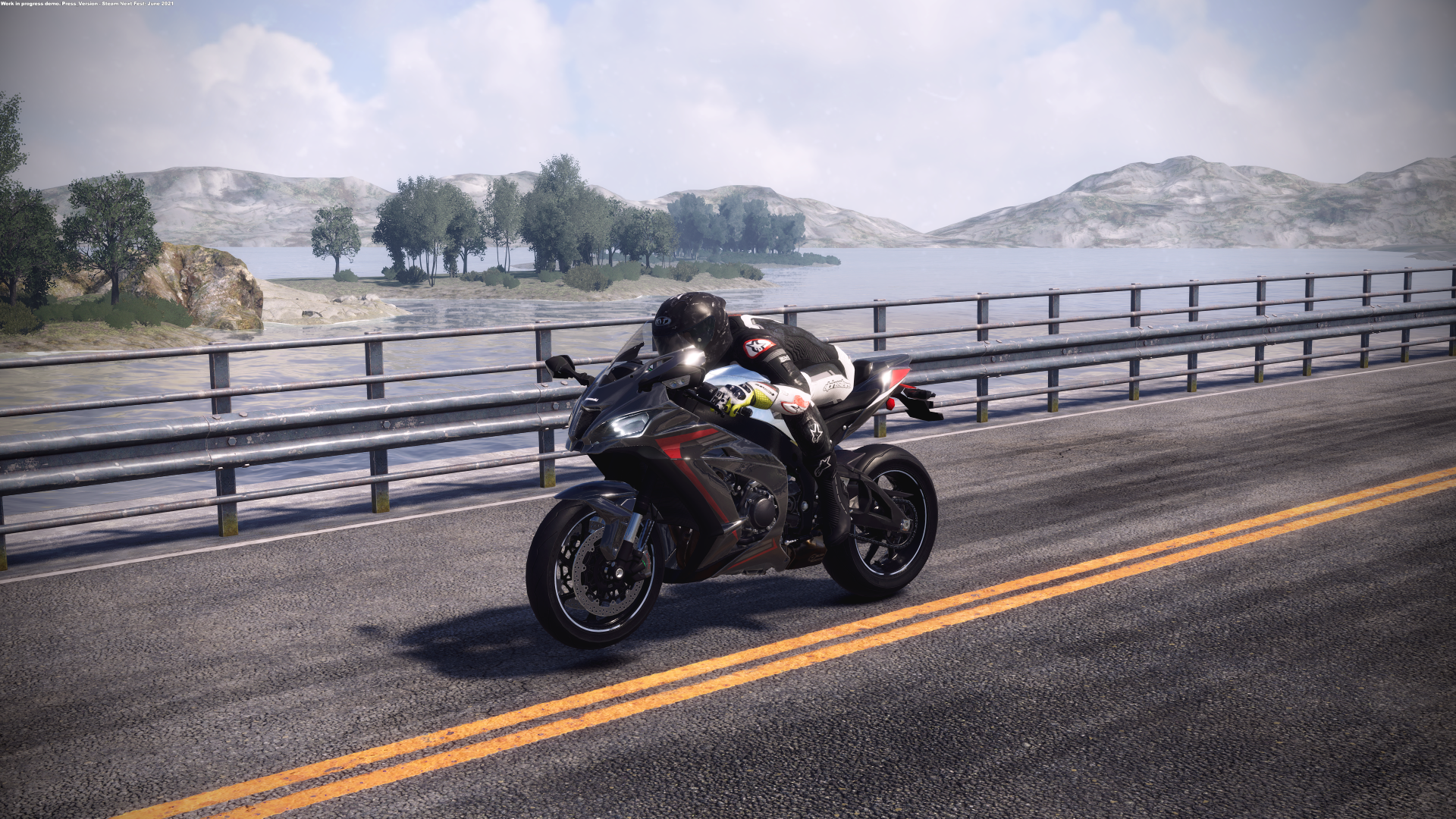
Having had an early hands-on with a preview build of the game, it’s clear what the focus of RiMS Racing is and how different it is from a conventional racing game.
In total there are only eight bikes in the game, albeit from eight different manufacturers and modelled to a level of detail that’s almost unmatched in any other racing game.
That’s because, while there may only be eight bikes you can ride, there’s in excess of 500 components that you can tune or completely replace and they’re all licensed parts from real-world manufacturers.
Over the course of the career mode you earn money from winning events and you can spend that money to buy new components to improve your bike.
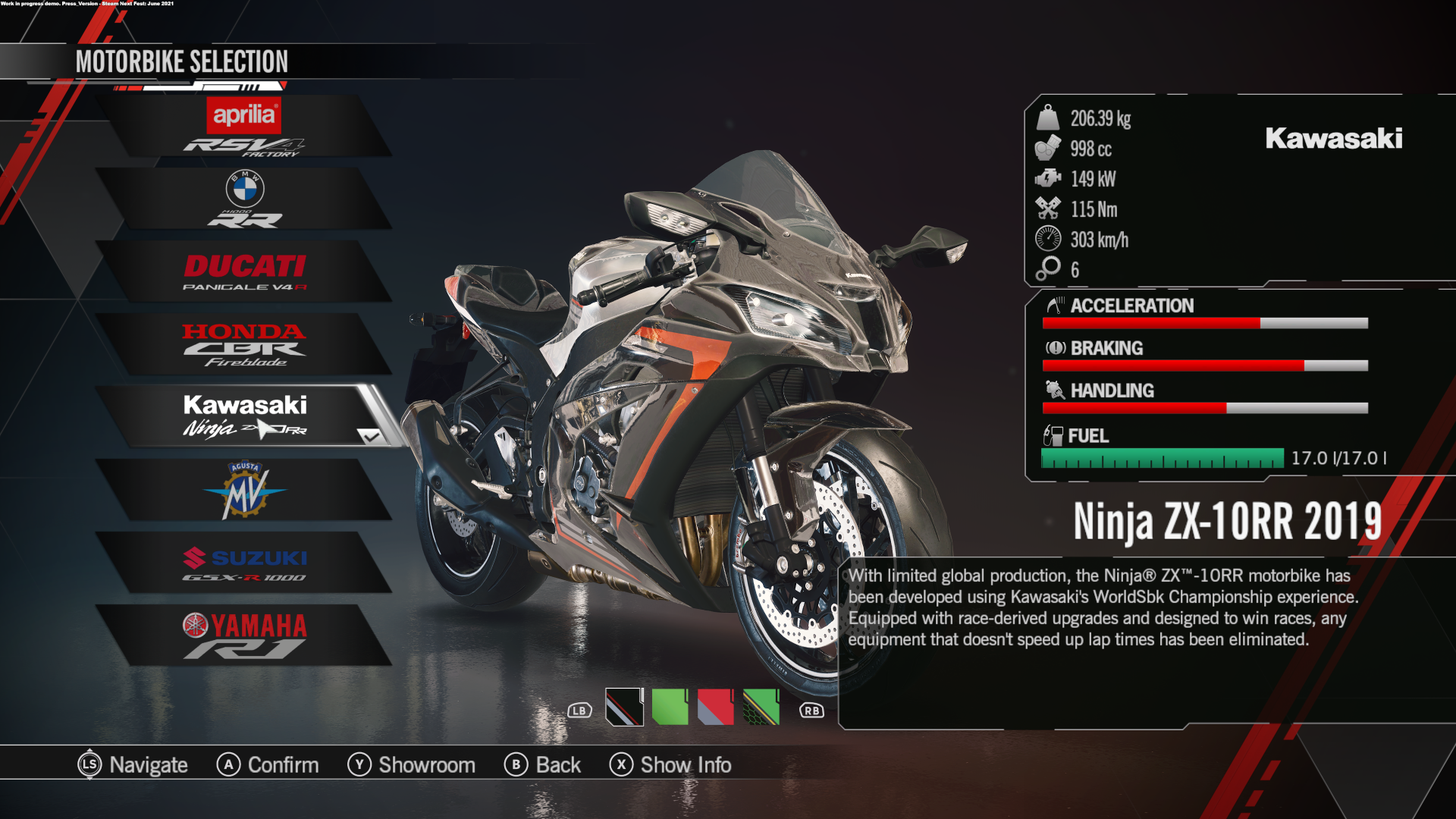
Aside from improvements though you’ll also have to maintain your bike as all the components wear during a race and that wear is carried over from one event to the next. So you’ll have to replace parts such as the brake pads and shock absorbers when they get excessively worn, and that’s the tip of the iceberg since you’ll even have to maintain the brake fluid – that’s how deep the mechanical side of this game goes.
The team behind RiMS Racing want the game to be as much an educational tool about how bikes work, what the different parts do and how to maintain them.
So when you replace a part you’ll have to go through the process of unscrewing, taking apart, replacing and fitting onto the bike the new component by rotating the analogue stick and pressing certain buttons to do those actions.
Previous Gran Turismo games have gone a little way into integrating car maintenance but that’s only ever stretched as far as washing your car and changing the oil. It’s not like you have to consider how many races a set of tyres can do because you always start with new ones, but in RiMS Racing tyre condition isn’t reset once you finish a race and neither is the condition of any component.
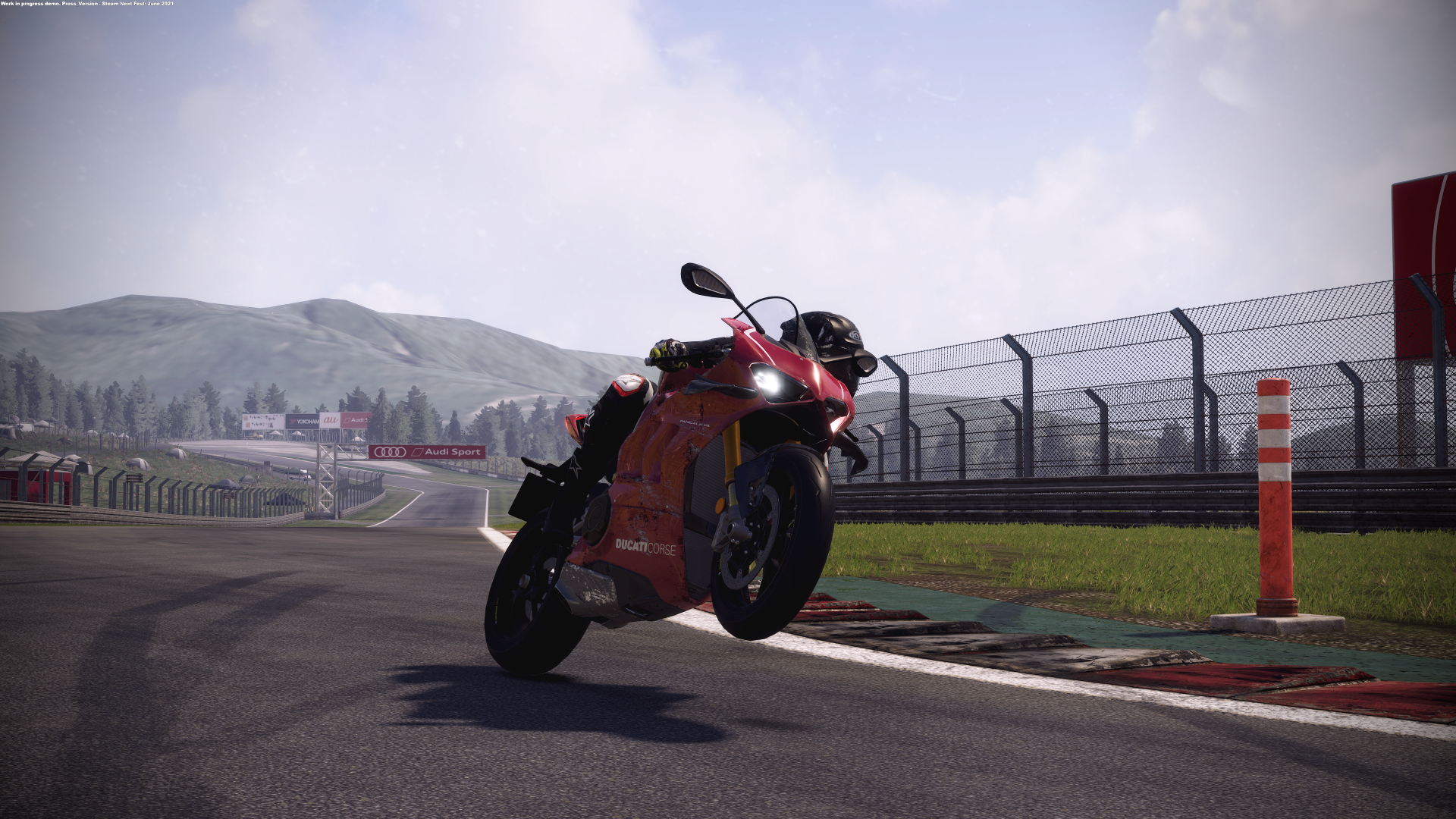
In the middle of a race, you can pause and check the exact wear and settings of each of your parts, useful if you can feel your bike getting worse and want to find out the reason for it. It’s also helpful for deciding when to pit during a race.
Much like with the bike maintenance, the pitstops are also interactive and you’ll have to do more button presses if you want to replace both tyres and refuel.
Those are the main differentiators between RiMS Racing and most other racing games but, as detailed and unique as the off track experience may be, the actual racing action and bike physics have to be good as well for the game to be worthwhile.
One thing that’s immediately apparent when riding a bike for the first time is how unforgiving it is, even if you have all the electronic aids turned all the way up. Leaning too far at the wrong speed will cause you to fall and unless you’re already very familiar with the technique needed to ride a motorbike at speed, it’s going to be an incredibly steep learning curve even when compared to other bike racing games such as the MotoGP titles.
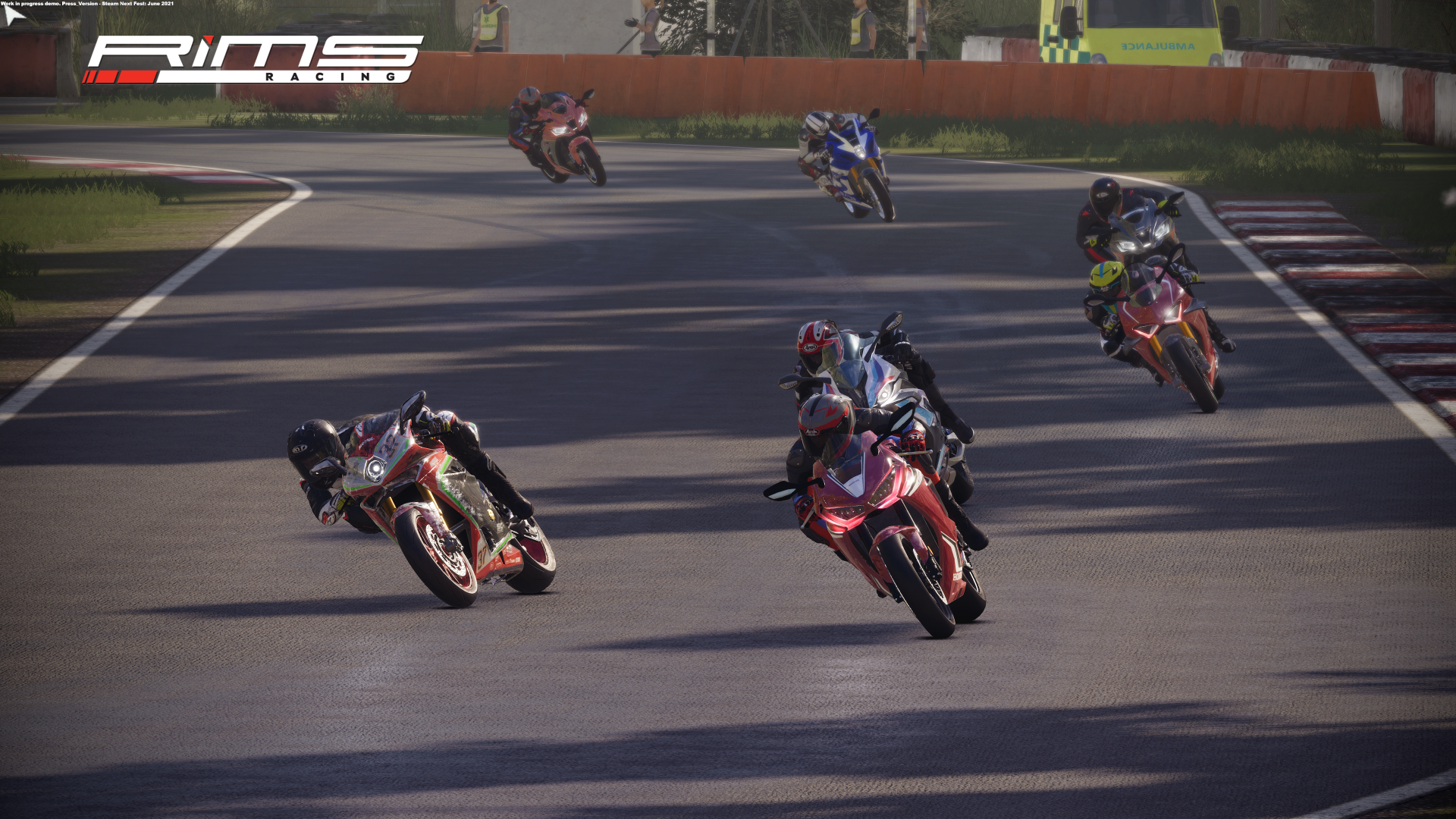
The developers do recognise this though and one of the first things you’ll do in the career mode is a simple introductory event where you lap the Zolder circuit three times and pit once. You can fall off your bike a few times and still comfortably make the gold time, but the game doesn’t stay that easy forever.
By their very nature, replicating motorcycle physics accurately in video games is incredibly tough but RaceWard Studio has certainly tried to create a more true to life experience. That means it’s tough to be consistently quick.
Despite all eight bikes being high-end, powerful road bikes, they are distinctly different to ride in the game even though they’re all, in a basic sense, very similar. For example for Suzuki GSX-R1000 is more lairy and has a greater tendency to wheelie compared to the comparatively predictable Ducati Panigale V4R.
When you first start playing, falling off your bike is inevitable and you’ll see that your rider has ragdoll physics that make low-speed crashes appear painful and high speed offs look harrowing.
Whilst the visuals and physics in play when you fall off your bike are realistic, the consequences for having a massive crash aren’t. Unlike in MotoGP 21, you don’t run back to your bike – instead you just reset back on it and, for a game that’s obsessed with wear and tear to your bike, it’s strange that the same level of focus isn’t given to your rider.
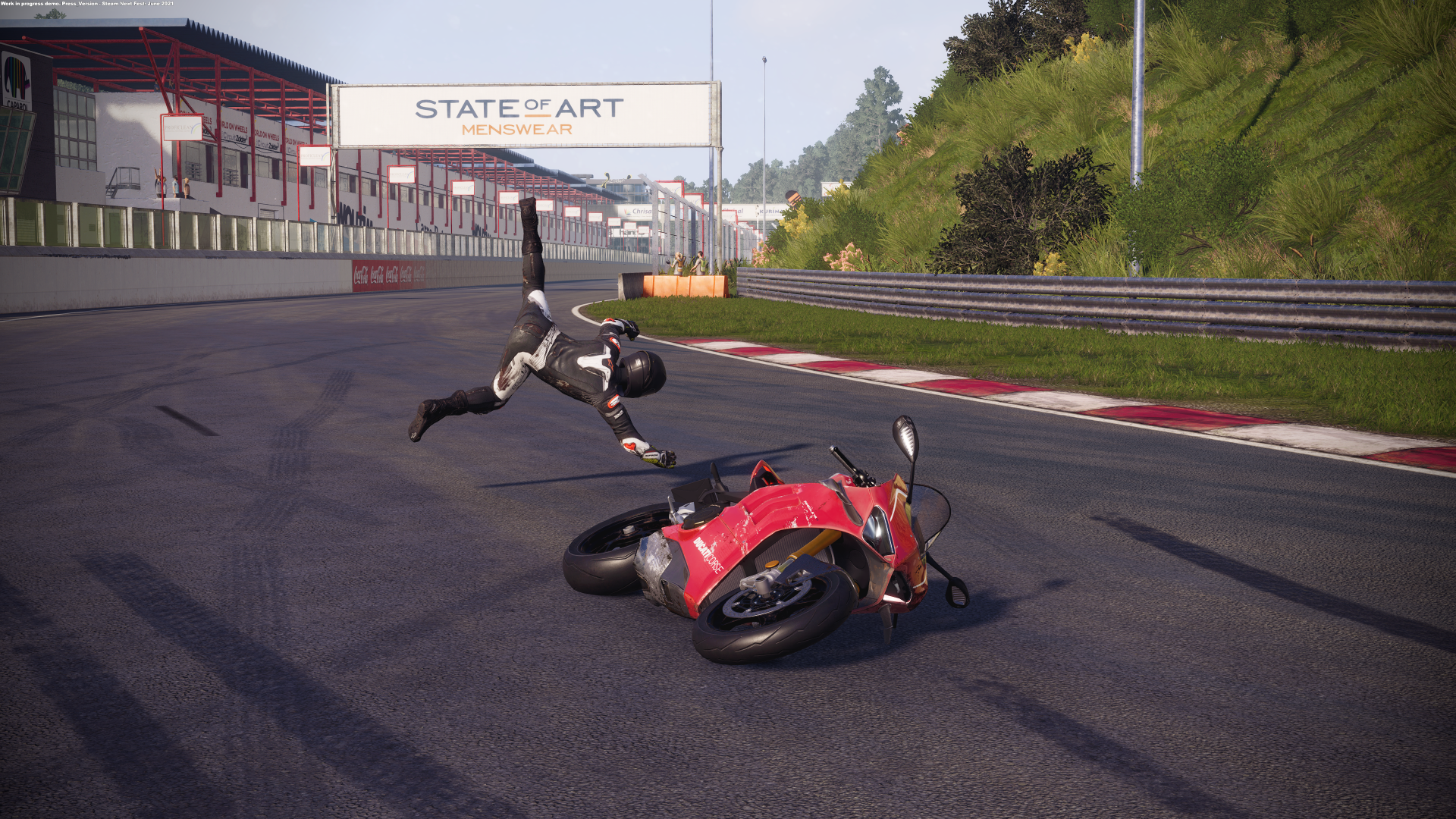
Admittedly that would change the tone of the game a fair bit but you can’t help but feel that there should at least be a run back to your bike feature if you’re trying to sell RiMS Racing as a realistic bike racing game.
However, there are over 200 customisation items for your rider including the suit, helmet and gloves.
There’s also a mixture of real-world race circuits, with nine in total including Paul Ricard, Fuji, Silverstone and Laguna Seca.
On top of that, there are five road courses in five different countries, with each route being able to be done in its reverse layout as well. Australia, Italy, Spain, Norway and the USA are the countries to have fictional, but inspired by reality, point to point road courses in the game.
The career mode also has some fairly simplistic skill trees which are split into engineering, management and research with each one offering relevant perks if you buy them.
Everything that surrounds the mechanical side of the bikes is fairly standard for any racing game, which means that area of the game has to shine for RiMS Racing to have a place in the racing video game market.
Undoubtedly, motorcycle fanatics will get some enjoyment from it given the necessity to maintain your bikes across a career mode and the sheer depth of upgradability and customisability each of the eight bikes has.
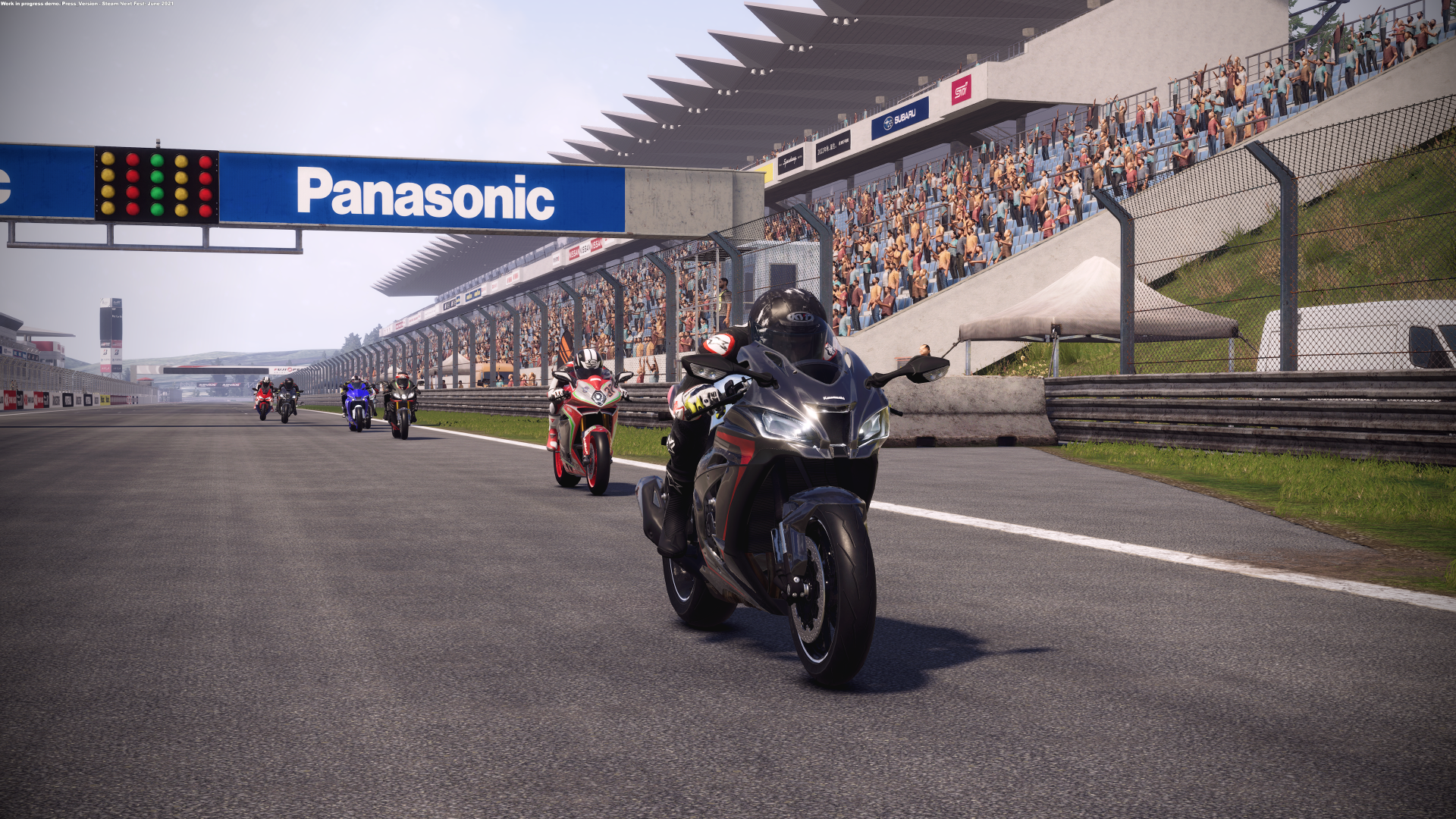
The fact there are only eight bikes in the game though could prove to be its biggest limitation to getting players to commit to the game long term since it lacks the collecting and building a vast collection of rides formula that has made games such as Gran Turismo so successful.
All eight bikes being of a similar performance doesn’t help that, but there are distinct differences between them and the level of detail each of the bikes has wouldn’t be feasible to do if the game had tens or hundreds of bikes in its roster.
Until the full game is released on August 19 we won’t be able to get a sense of the longevity this game has, but it seems like RiMS Racing will be adored by motorbike enthusiasts. For people who just want a fun racing game they can enjoy for dozens of hours, only time will tell how good it is as both an offline and online experience.






